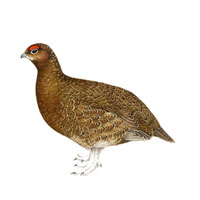Unique to the British Isles, the red grouse is the finest gamebird in the world. As such, it’s our only quarry whose season invades the national consciousness, with the annual celebration of the “Glorious” Twelfth (though shooting men always call it “The Twelfth”).
Its home is the heather uplands of northern England and Scotland, with a few scattered populations keeping a toehold in Wales and Ireland. All told, there are some 460 grouse moors in the UK covering 1,500,000 hectares, a precious resource of global importance: we have 75% of the world’s heather moorland.
The grouse remains the ultimate challenge due to its extremely fast, low flight, hugging the contours of the moor. This evolved over the ages to deny the peregrine, its main avian predator, air space for the falcon’s deadly 200mph stoop. This has resulted in a quarry species that often travels well over 60mph if there’s any wind (there usually is) and at head height.
Even so, some accomplished Shots regularly manage to shoot five, and sometimes, six out of a covey, using a pair of matched guns and a skilled loader.
Grouse are extremely wary, and their pursuers are careful to remain still in their butts and ensure their loaders and spectators do likewise. They also dress in somber hues. Chatter is discouraged, as total concentration is needed to shoot successfully and safely, an acute concern with low shots being the norm.
Paradoxically, the bird flourishes only where it is shot. Like all ground-nesting birds, it requires suitable habitat and protection from predators, and only keepered moorlands provide both. They are expensive to maintain yet there are always men prepared to spend millions on wild acres of heather and peat, rock and water. Like so many before them, they have discovered few experiences in life better a day’s driven grouse shooting, especially later in the season. Patrick Chalmers, the sporting poet, expressed much of the attraction in verses penned in 1931.
